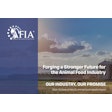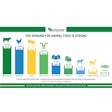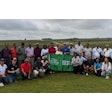Aquaculture America 2024 is set to showcase groundbreaking research and development, according to Dr. Tim Sullivan, national program leader at the National Institute of Food and Agriculture (NIFA). Sullivan emphasizes the importance of this event for NIFA-funded researchers and Extension specialists in supporting the U.S. aquaculture industry, which faces increasing global seafood demand.
Sullivan noted that with seafood demand expected to rise by 70% over the next 30 years and diminishing yields from capture fisheries, a significant expansion in aquaculture is essential to meet future aquatic food needs. He highlighted NIFA's role in providing leadership and funding for aquaculture research and technology development in collaboration with Land-grant Universities and various stakeholders.
At the conference, scheduled for February 21, Sullivan will host a 3.5-hour educational session titled “Impacts and Outcomes: USDA NIFA Support for U.S. Aquaculture.” This session will feature 13 NIFA-funded projects, showcasing innovations and advancements in the field. Key projects include:
- The development of the first U.S. burbot fingerling production facility by Colby Johnson of Evergreen Aquatics, Washington. Burbot, a new candidate for commercial aquaculture, is noted for its adaptability to captivity and the high quality of its filets, liver, and roe.
- A presentation by Arun K. Dhar from The University of Arizona on a new diagnostic method for the aquafeed industry. This method aims to ensure the biosecurity of feeds and ingredients, a critical need until a crustacean cell line for pathogen screening in aquafeed becomes available.
- Shraddha Hedge from Texas A&M University will discuss the economic risk assessment of various U.S. aquaculture businesses, including catfish, trout, and marine shrimp, across different production systems. This project aims to develop at least 30 risk models to compare results across species and systems.
- Brandy E. Phipps of Central State University, Ohio, will present the “Sustainable Use of a Safe Hemp Ingredient (SUSHI)” project. This NIFA-funded project explores the use of hemp grain as an aquaculture feed ingredient, assessing its safety, efficacy, and economic viability, and its potential to improve food sovereignty and quality of life in vulnerable communities.
NIFA's diverse aquaculture research and Extension base covers various funding mechanisms, research areas, and species. Additionally, NIFA facilitates the coordination of all federal aquaculture programs through the Joint Subcommittee on Aquaculture, reporting to the National Science and Technology Council of the Office of Science and Technology Policy in the Office of the Science Advisor to the President.

















